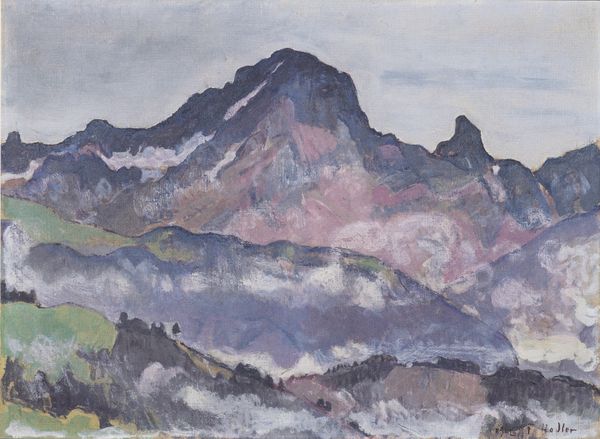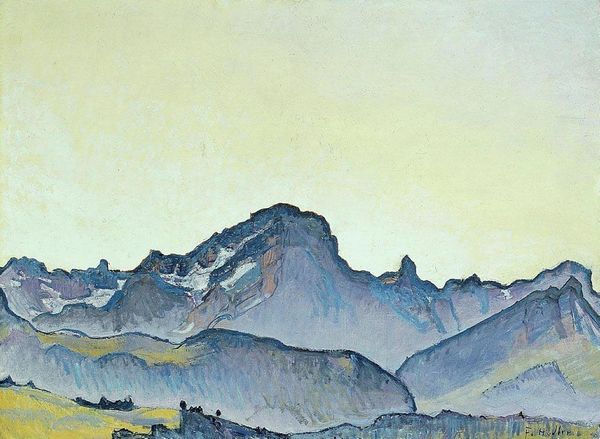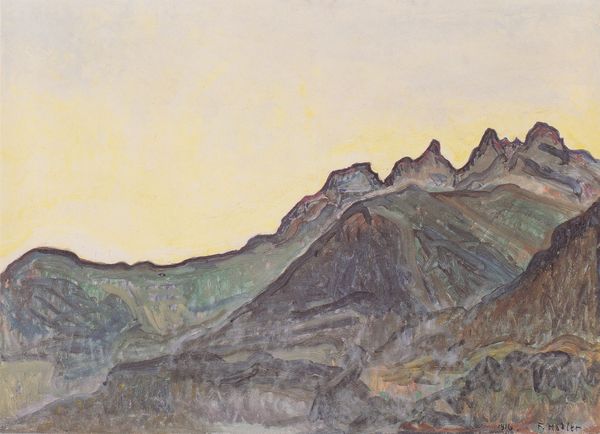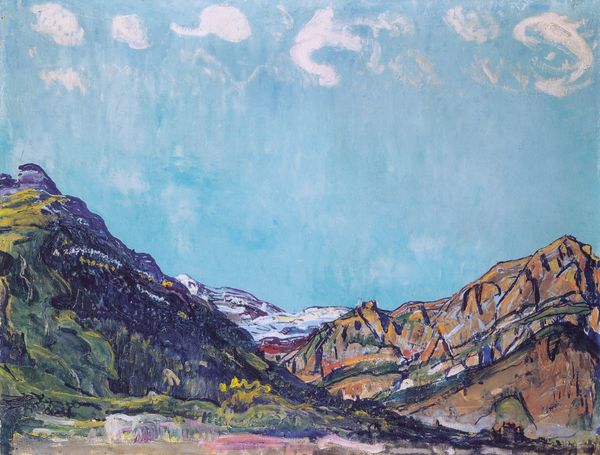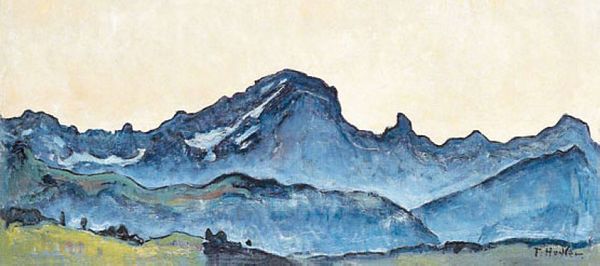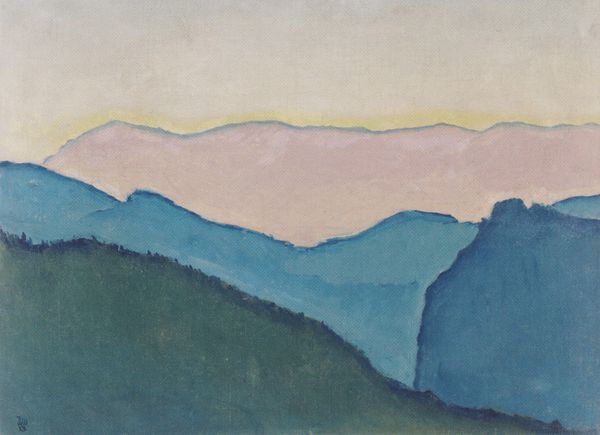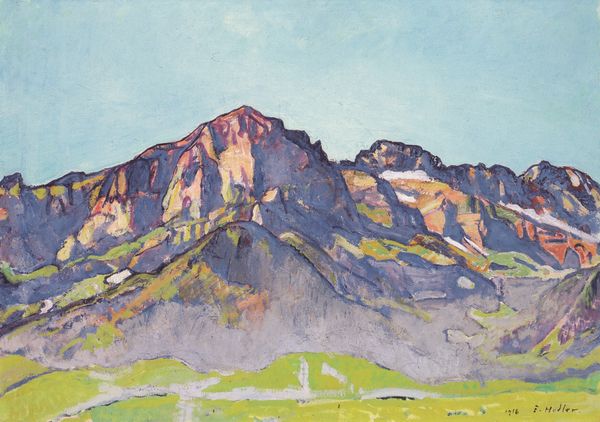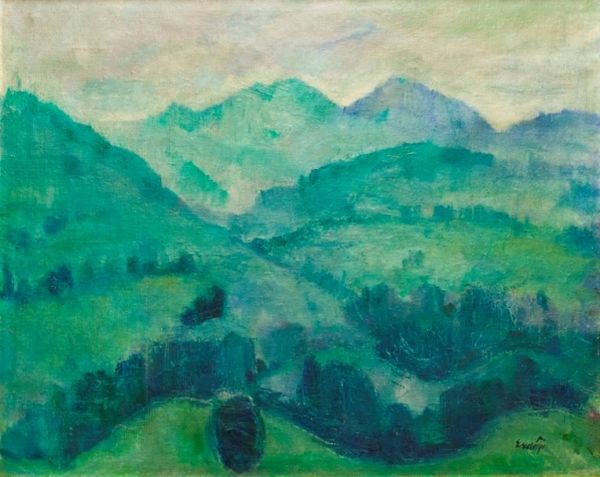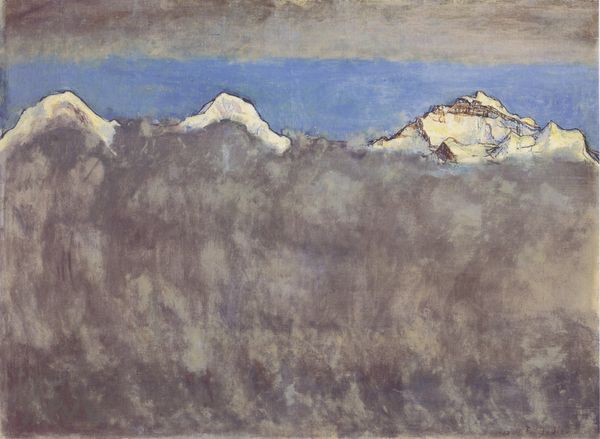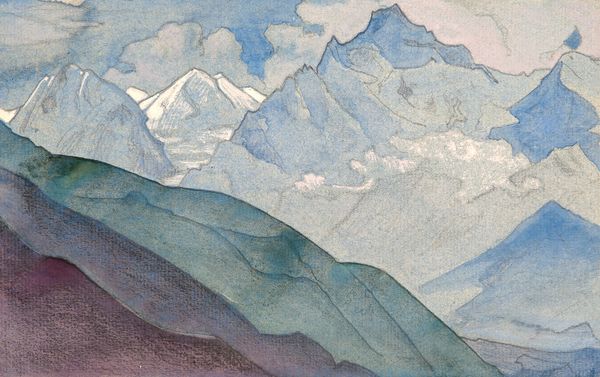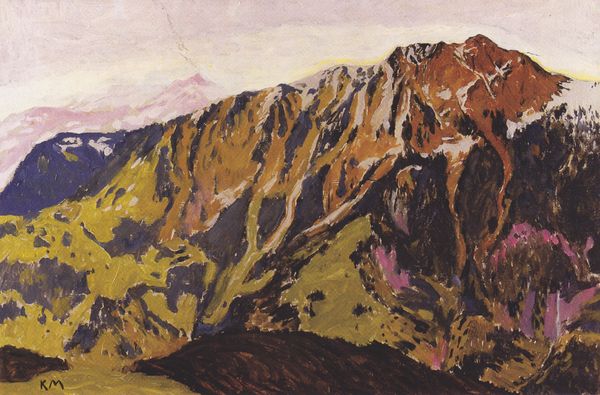
Dimensions: 53 x 75 cm
Copyright: Public domain
Curator: Hodler’s “From Le Grand Muveran Villars,” created in 1912, depicts a somewhat abstracted mountain range, doesn’t it? Editor: Yes, a bit brooding, almost monochromatic in its blues and purples, though there's a hint of warmer tones underneath. It's definitely playing with a certain emotional impact. I’m drawn to the application of paint. It’s quite loose, you can almost feel the gesture of his hand. Curator: Indeed, and understanding his process and materials enriches our view. The way Hodler applies the oil paint, with these rather broad, flat strokes, reveals his awareness of the canvas as a manufactured surface, one that challenges conventional notions of mimetic landscape painting. How does the setting affect this image? Editor: Well, Villars itself was developing as a tourist destination during that period, attracting visitors from various social strata. We might ask what role Hodler's landscapes played in shaping perceptions of the region, constructing a picturesque view for consumption. Was he simply reflecting the popular image, or engaging with it critically? Curator: That’s a fascinating question, especially when you consider the rise of landscape painting and its function in fostering a national identity, as well as the industrial production of art supplies. Hodler was certainly conscious of these material and historical forces. Editor: The layering of these colours also invites thoughts on how light interacts with landscape to craft something beyond surface visual impressions. Considering that Hodler also painted other landscape versions of this mountain, it poses questions concerning how these variations impact visual culture within museums. Curator: You’re right. By recognizing the socio-economic dimensions, we can challenge romantic notions of artistic genius, no? It invites questions about artistic labor, commercial exchange, and how perceptions of beauty can be manufactured and disseminated. Editor: Agreed. And perhaps reconsider what landscape paintings represent and the function these imageries provide in our own contemporary moment. Curator: Very true; I see it as a reminder of the interplay of material, maker, and market forces in even the most seemingly idyllic scenes. Editor: Precisely, I now also feel inclined to return to Hodler's other mountain pieces. I wonder what social factors and cultural trends had the largest impact.
Comments
No comments
Be the first to comment and join the conversation on the ultimate creative platform.
